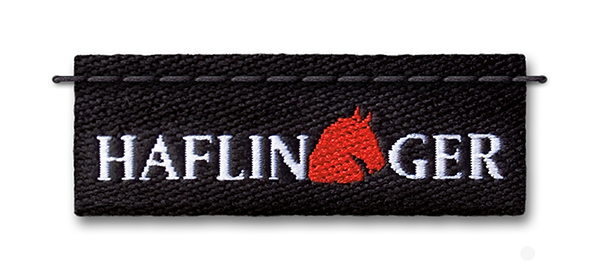About Haflinger
A Masterpiece with Tradition – The Story of Haflinger
The Haflinger story begins long before the brand we know today. In 1898, Emil Otto Sr., a master of trimmings and braids, founded a small textile workshop in Goslar, Germany. Emil Otto, the great-grandfather of the current CEO, quickly earned a reputation for producing high-quality cords and trimmings. Even then, customers valued natural materials and precise craftsmanship, hallmarks of traditional artisanal quality.

Shortly thereafter, the family business began producing premium socks made from top-quality yarns. During a skiing trip in Austria, Emil Otto stepped out of the ski lodge wearing these wool socks. Naturally, the snow soaked his socks immediately. This experience inspired him to combine the warmth and comfort of felted virgin wool with a durable leather sole – creating the first prototype of a slipper that kept feet both dry and warm.
In 1955, this innovation became the foundation for what we now know as the iconic Haflinger slipper.

Soon, the family workshop began producing additional slippers, initially for well-known manufacturers who sold them under their own brands. These slippers quickly won the hearts and homes of wearers around the world. Over the years, the business expanded, innovated, and introduced new designs, eventually taking the first steps toward establishing the Haflinger brand we know today.
Commitment to Natural Materials
- From the very beginning, Haflinger slippers have been defined by the careful selection of natural, high-quality materials:
- Boiled Wool & Wool Felt: Breathable, temperature-regulating, and soft, wool provides warmth in winter and cooling comfort in summer.
- Sheepskin (Lambswool): Luxuriously soft, moisture-wicking, and naturally plush, sheepskin adapts to the foot’s shape for a perfect fit.
- Leather: Durable, flexible, and elegant, leather adds strength while enhancing comfort and longevity.
- Cork Footbeds: Anatomically shaped cork footbeds provide natural support and promote healthy foot posture.
This dedication to natural materials and meticulous craftsmanship has been at the heart of Haflinger for more than a century, making every pair of slippers a blend of tradition, innovation, and comfort.
Naturally Handmade
Only the best for your feet. With Haflinger shoes, you can rely on impeccable quality in both materials and craftsmanship. We use natural raw materials from carefully selected suppliers, processed in Europe using traditional methods. Each pair of shoes reflects the skill, dedication, and care of our passionate team.
Craftsmanship
To guarantee the premium quality of our boiled wool fabrics, we produce them ourselves. Only pure virgin wool, shorn exclusively from living sheep, is used. The wool is spun into yarn and treated using a special washing process with moisture, friction, and heat. This so-called fulling process creates the dense, insulating fabric that makes Haflinger shoes so cozy and comfortable.
Characteristics
Natural Thermoregulation
The processed wool has natural thermoregulatory properties. Wool can absorb water within its fibers while repelling it on the surface. This allows it to absorb up to 33% of its dry weight in moisture without feeling wet, keeping your feet comfortable in all conditions.
Self-Cleaning & Dirt-Repellent
Thanks to the unique structure of the wool surface, sheep’s wool products stay naturally clean for longer.
Breathable & Odor-Resistant
Our natural virgin wool is highly breathable and absorbs very few odors, so you can enjoy your favorite shoes for as long as possible.
Wrinkle-Free & Colorfast
Even after prolonged use, our boiled wool fabrics retain their beautiful color and resist creasing, keeping your shoes looking like new.
Insulating Against Heat & Cold
Wool naturally creates an optimal climate against the skin. By preserving the natural properties of the wool, Haflinger shoes provide a wonderfully warm and comfortable feeling for your feet, no matter the season.
The Production Process of Boiled Wool (Walkstoff)
Walkstoff, also known as boiled wool, is a high-quality, durable, and naturally warm fabric widely used in premium footwear and outerwear. Its unique properties – soft yet robust, insulating yet breathable – are the result of a careful and traditional production process.
1. Selection of Raw Wool
The process begins with the selection of high-quality virgin wool. Only the finest fibers are chosen to ensure the material is soft, resilient, and durable. The wool is thoroughly cleaned and sorted to remove impurities.
2. Spinning and Weaving
The raw wool fibers are spun into yarns of the desired thickness and then woven or knitted into fabric. At this stage, the fabric has a smooth but flexible texture.
3. Fulling (Boiling)
The key step that defines Walkstoff is fulling, or controlled boiling. The fabric is repeatedly washed in hot water, often with gentle agitation. This process causes the wool fibers to interlock and shrink slightly, resulting in a dense, felt-like texture. Fulling enhances durability, gives the fabric structure, and makes it naturally water-repellent while retaining softness.
4. Finishing and Shaping
After fulling, the fabric is rinsed, dried, and sometimes lightly brushed to create a uniform surface. The finished Walkstoff is then cut and shaped into the desired components for slippers, clogs, or other garments.

